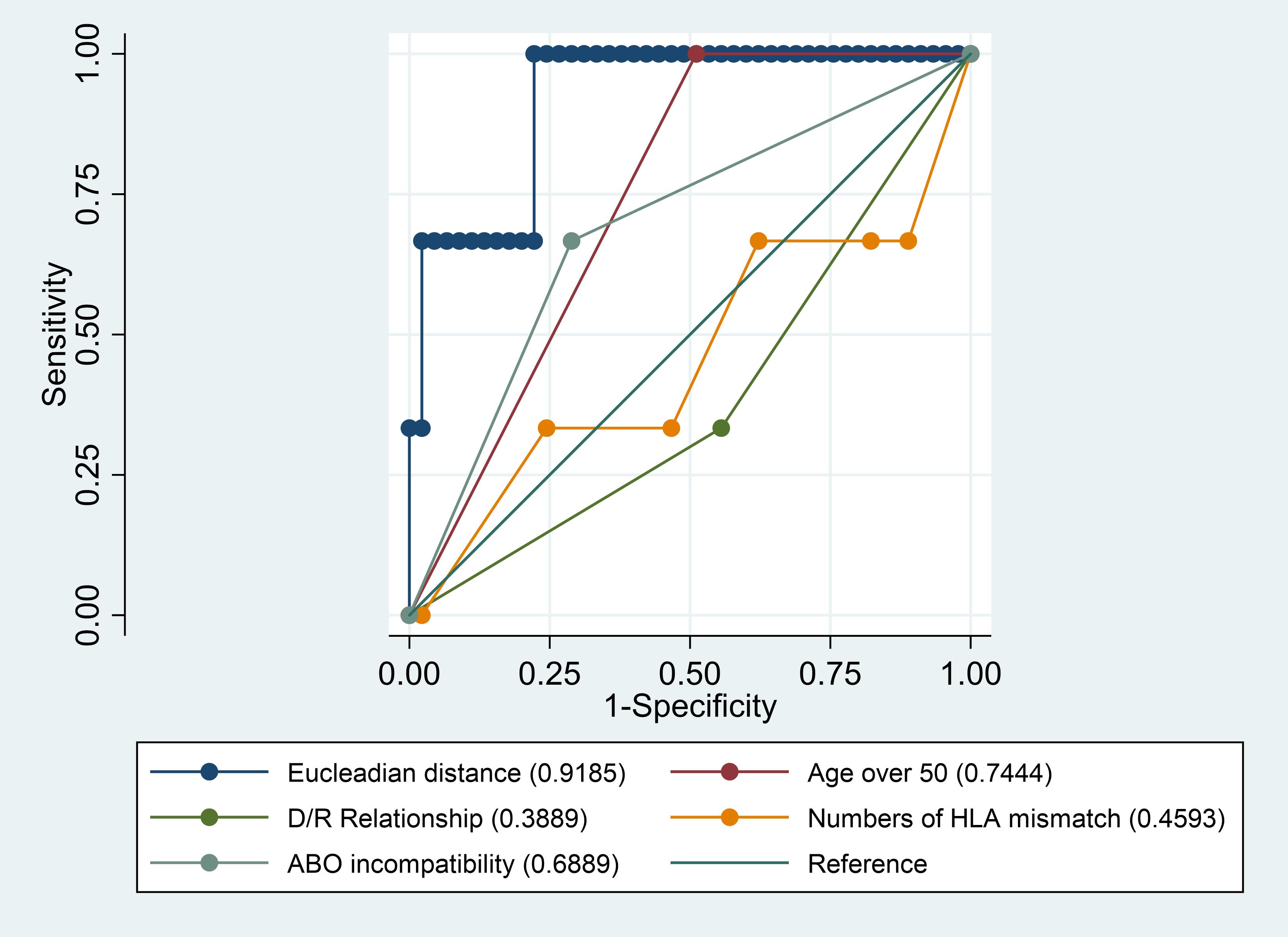Differences of Gut Microbiota Composition between Donor and Recipient May Predict 1-Year Graft Function
1Seoul National University Hospital, Seoul, Korea, Republic of, 2Chungbuk National University Hospital, Cheongju, Korea, Republic of, 3Kangwon National University Hospital, Seoul, Korea, Republic of, 4Chunlab Inc., Seoul, Korea, Republic of, 5Seoul National University Boramae Hospital, Seoul, Korea, Republic of, 6Hallym University, Chuncheon, Korea, Republic of
Meeting: 2019 American Transplant Congress
Abstract number: 594
Keywords: Graft function, Kidney transplantation, Prediction models
Session Information
Session Name: Concurrent Session: Stem Cell, Cellular Therapies and Regenerative Medicine
Session Type: Concurrent Session
Date: Tuesday, June 4, 2019
Session Time: 4:30pm-6:00pm
 Presentation Time: 4:54pm-5:06pm
Presentation Time: 4:54pm-5:06pm
Location: Room 310
*Purpose: Signals derived from gut microbiota are critical for the development and maintenance of the human immune system. In view of kidney transplantation (KT), allograft should be shifted from donor’s microbiome environment to recipient’s one, although of which significance has been unclear.
*Methods: We prospectively enrolled living donor KT cases at two centers. Stool samples were obtained from them before transplantation. Microbiota composition was analyzed using extracted metagenomic DNA from the feces, using the Illumina MiSeq system. Gut microbiome difference between donor and recipient was determined via the Euclidean distance of the microbiome.
*Results: The microbial distance was estimated from 55 donor-recipient pairs. The recipients were 47.7 ± 13.0 years old; donors, 47.5 ± 11.2 years old. There were 26 relatives, 25 married couples and 4 non-relatives. 17 pairs (30.9%) had ABO blood group incompatibility and 24 pairs (43.6%) had numbers of HLA mismatches more than 3. The mean 1-year eGFR was 65.0 ± 16.6 mL/min/1.73 m2. Interestingly, the shorter Euclidean distances were, the lesser eGFR values were at 1-year after transplantation (regression beta -0.503, P<0.001). Moreover, the lower tertile group of Euclidean distances revealed a significant lower 1-year eGFR, compared with higher or middle tertile distance groups (P=0.020). Finally, when we compared area under the curve of ROC (AUROC) of eGFR <45 ml/min/1.73 m2, the microbial distances between donors and recipients at the time of pre-transplantation (AUROC 0.919; 95%CI 0.772-1.000, reference for p-value) were associated with lower 1-year graft function better than age over 50 (AUROC 0.744; 95%CI 0.671-0.818; P=0.0411), the numbers of HLA mismatch (AUROC 0.459; 95%CI 0-0.923; P=0.0143), ABO incompatibility (AUROC 0.689; 95%CI 0.170-0.595; P=0.0292) and donor-recipient genetic relationship (AUROC 0.389; 95% CI 0.517-0.928; P=0.0008) (figure 1).
*Conclusions: In this study, we demonstrated that differences of gut microbiome composition between the recipient and donor were negatively associated with 1-year graft function. Moreover, they predicted lower 1-year graft function with eGFR <45 ml/min/1.73 m2 better than other basic immunologic parameters.
To cite this abstract in AMA style:
Kim J, Cho H, Park J, Jeong J, Kwak M, Kim B, Kim D, Lee J, Kim B, Kim Y, Lee H. Differences of Gut Microbiota Composition between Donor and Recipient May Predict 1-Year Graft Function [abstract]. Am J Transplant. 2019; 19 (suppl 3). https://atcmeetingabstracts.com/abstract/differences-of-gut-microbiota-composition-between-donor-and-recipient-may-predict-1-year-graft-function/. Accessed January 2, 2026.« Back to 2019 American Transplant Congress

